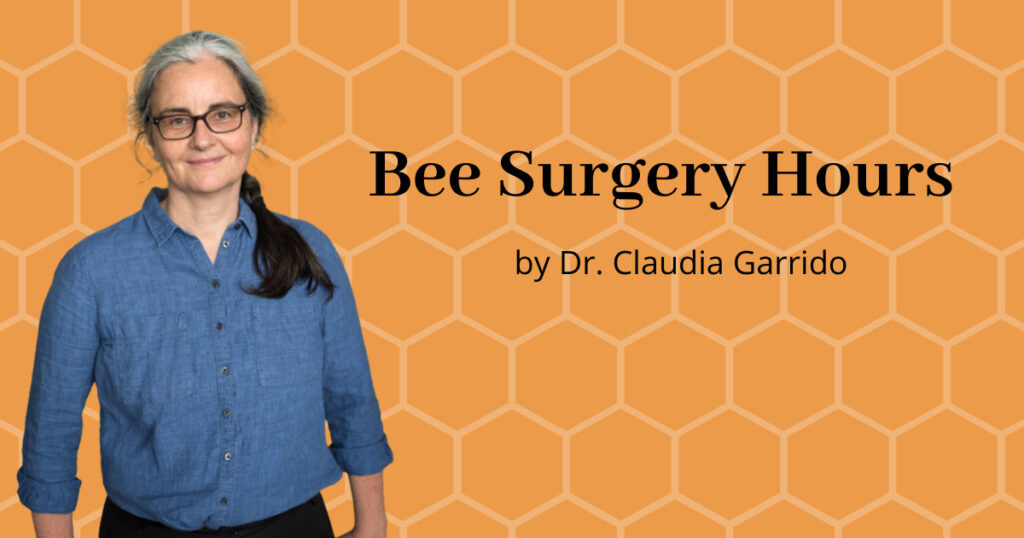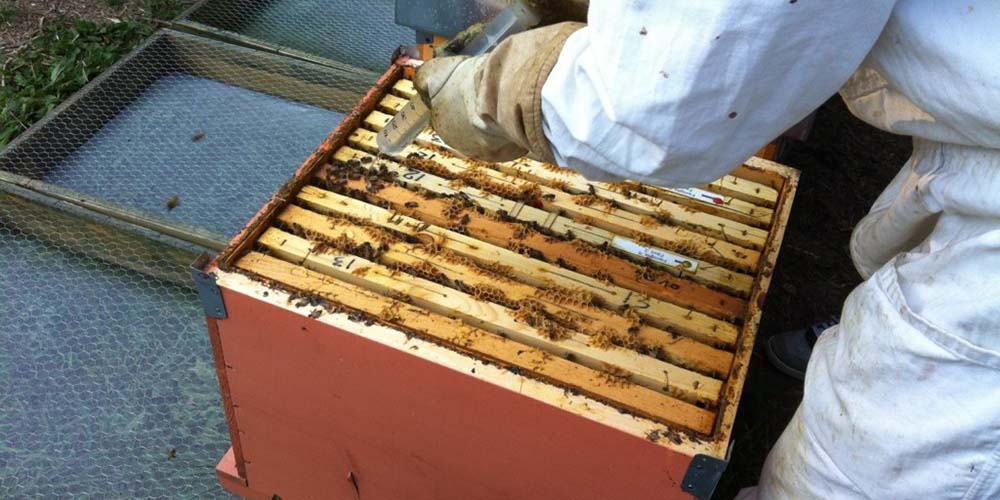In a recent study, scientists from the UK talked about timing varroa treatments and how important this is for successful overwintering. Treating at all already helps, but if you do it at the correct time, it helps even more. Similar to the Swiss study I discussed now three years ago, these researchers also stress that beekeepers who follow the recommendations from science are more successful in keeping their colonies alive. Which should be the aim, in the end.
These findings may seem obvious to those of you who already do everything right. But there are still many that don’t. And this was an important result of both studies as well. In the UK, it’s more than 30% who don’t follow the recommendations. The reasons for this are many, but between them are concerns about residues in the honey or about negative effects for the colonies. Which then leads to not treating. The authors of the study put it like this:
It should be noted that these concerns are generally weighed against the known advantages of Varroa treatment, and thus in many cases the decision to adhere or otherwise can be considered as a cost-benefit trade-off at the individual level.
O’Shea-Weller et al. 2025
OK… here we get into good practices, education, and also some politics. Stay with me.
About concerns and risks
Let’s begin with the concerns themselves. Yes, it’s true that some varroa treatments can also have negative effects on the colonies. Everything that has an effect, also has side effects. I’ve said this several times already: If someone states that a treatment is 100% safe, you shouldn’t believe them. That doesn’t exist. So, do you have to chose between losing your colonies to varroa or damaging them with treatments? No, that’s not true.
This is the point in which good practices enter the scene. That’s why timing varroa treatments, the correct dose and application matter. This is why I insist so much in calling varroa treatments veterinary medicine. Because they’re similar to whatever you may take occasionally or permanently. It’s medicine. Also your simple headache pill can do harm, as you can see if you read the label. It’s the same for every product you treat varroa mites with.
The label is the essential part also when we talk about treating varroa. This is the result of all the studies done to register the product. There you will find the how, when, how often, etc. that makes sure that your colonies get the benefit (killing varroa) but not the risks (harming the bees) of the treatment.
Timing varroa treatments as an essential element
In addition to the label, you should also inform yourself if there are any recommendations for the timing in your country or region. On the label, this is generally not very clear. For the simple reason that this changes depending on the conditions. As a rule of thumb: Generally, two treatments are recommended. One right after the maximum development of the colony and one in a time of low resources – like winter or a dry season with little flowers. I wrote more about the reasons for this timing here. So, even if there is a recommendation, you may understand the reasons behind it.
The timing of varroa treatments is a part of good practice, like the dose, correct application, etc. In the UK study it proved to be an essential element for both efficacy and avoiding resistance and residues. So, the recommendations are made just to meet the concerns beekeepers may have about treatments. However, the pure facts don’t resolve them. This now comes into a field in which I’m not very competent. When I have concerns, I look up data, speak with experts, and follow their advice. But I know that not everyone works like this.
Education is more than learning about facts
When I speak about learning and education, most people understand it as an academic procedure. But I mean more than that. Good education means also understanding and being understood – so tackling the concerns also at a more emotional level. And this needs also the “community level”. So, beekeepers exchanging experiences, trying to find solutions together. This can be formal (within an association) or informal – just a group of beekeeper friends. This will also help to transfer the theory into practice – which is a central part of really learning.
Dealing with misinformation
As in every group of people, misinformation is common among beekeepers, too. But using the different ways and levels of education, I think, is a good measure to deal with it. Perhaps, we can classify beekeepers – concerning their compliance with recommendations into four groups:
- Those who understand what varroa treatments and good practices are all about. They seek for information, speak to those who have more experience or knowledge and follow recommendations. In terms of bee health, this group is a “safe bank”, also because they understand that things may change over time, what’s in their control, etc..
- Those who in principle know what they should do. But still are insecure about the details and struggle in searching for good information.
- Those who are overwhelmed by all the things that have to be considered. When they come across “easy solutions” they’re relieved and don’t question if it’s plausible.
- Those who are lost for any reasoning. They’re convinced that varroa is a hoax, scientists are corrupted by agrochemical industry, and things like that.
The groups that most profit from learning at the community level are groups 2 and 3. Group 1 is important here, they make the “translator” between scientists, vets, and other giving the advice and the beekeepers in groups 2 and 3. Especially for those overwhelmed, the beekeepers that have their stuff together may have a larger credibility than scientists. They save the overwhelmed from slipping into the group of the lost, those who live in conspiracy theories.
Timing varroa treatments and politics
Which brings us to the last point: How timing varroa treatments (or any other good practice) relates to politics. I know that the word alone is… “repellent” to many these days. But hear me out: Politics gives the framework for our daily life and how we live together. Relating to bee health, this could mean helping with the training and education of beekeepers. So, making the life of those engaged in consulting, teaching, training, etc. easier. For instance, by supporting education initiatives and programs in associations.
Policy makers could also make sure that there are enough registered and tested products available. That’s not the case everywhere. Where there’s no product, beekeepers invent something themselves. In the good and in the bad.
And finally, coming back to the timing: Politics also gives the framework for research on the application of what we know to the conditions and practices in different regions. Because the maybe most essential part of education is to meet people where they are. Not where they should be.


